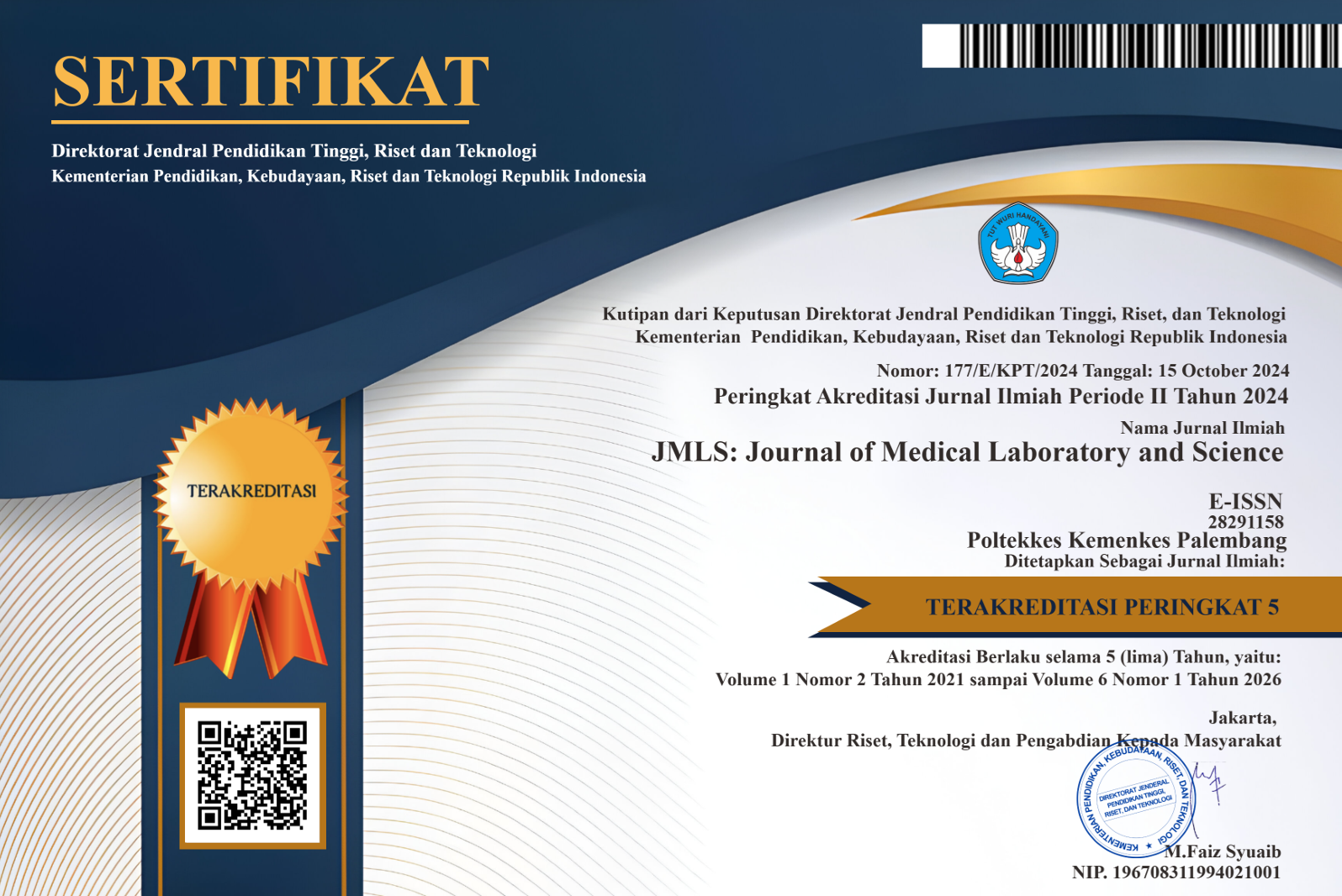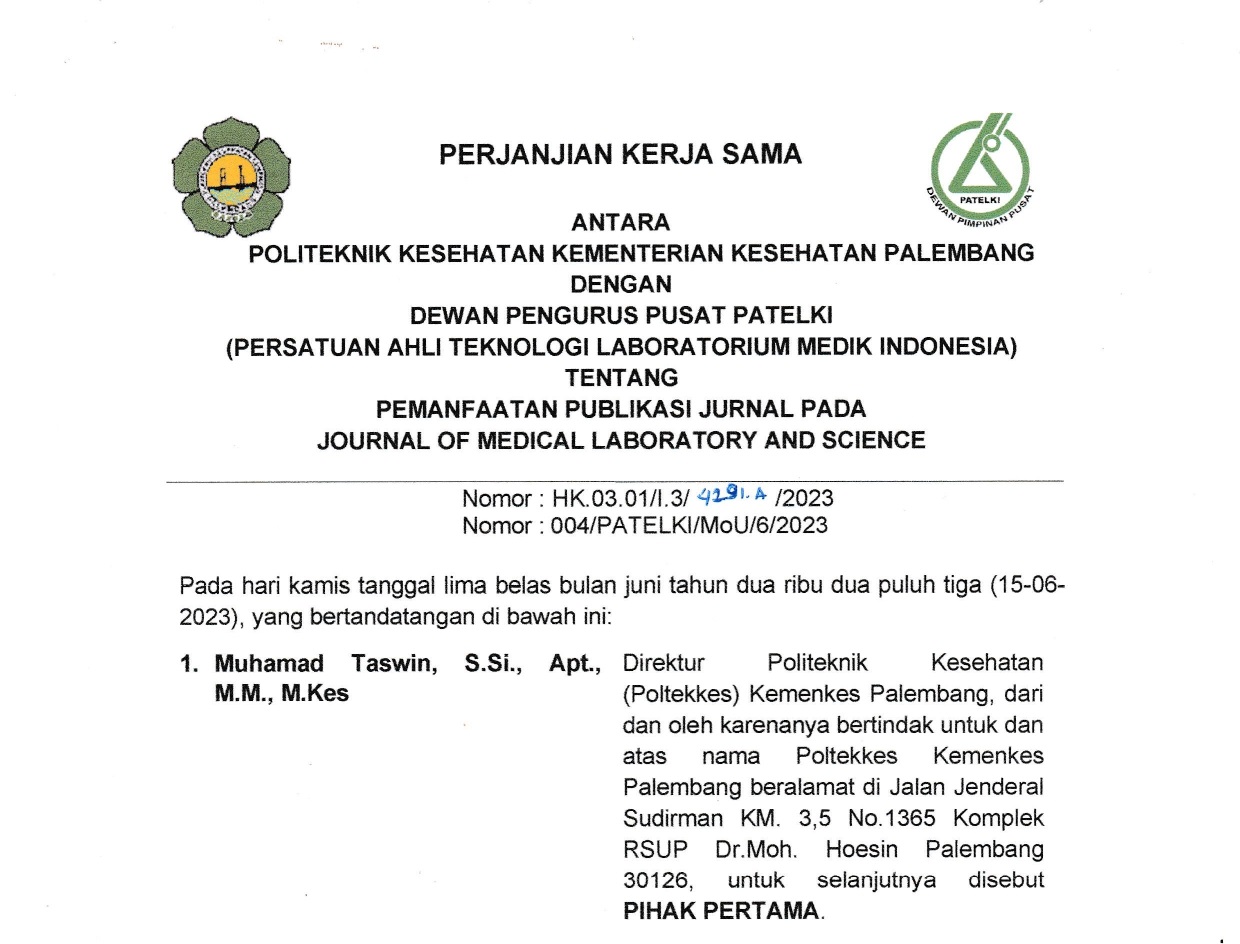Author Guideline
Author Guideline
Tittle Should be Writing Short, Clearly and Reflect of The Research Results (Arial 12, Single Space, Bold, Italic, Align Text Left)
A B S T R A C T
Abstracts are written in shorts of only 200-300 words and consist of only one paragraph containing a brief background, research objectives, research methods, in summary, the main results of the findings include new facts, major conclusions, and implications. It should contain all the keywords that will be indexed; does not include unexplained tables, illustrations, references, abbreviations, and acronyms; does not contain information or conclusions that are not in the manuscript. Do not repeat the title in the abstract. In essence in the abstract is to convey what has been done and that have been obtained.
1. INTRODUCTION
Introduction essentially contains a description of the problem or reason of research or logical statement that leads to the main hypothesis or theme. The Introduction section should consist of:
- The general background of research (tips: keep a maximum of one paragraph);
- State of the art or a brief study of other similar (previously) research literature to justify novelty research in this article (tips: one to two paragraphs);
- The reference libraries in the previous state of the art research section must be current, relevant, and original (primary literature) of the literature review not too extensive;
- Gap analysis or novelty gap based on state of the art (the gap statement should contain two elements, that is, from the important aspect of the research and what the uniqueness or novelty of the research is compared to previous research);
- Hypotheses (if any) are not always expressed and need not be in the form of a sentence.
Writing in the introduction by using arial letter with font 11, space 1 and left-right and indent of 6 taps. Citation writing and bibliography must use a reference manager like Mendeley and others with AMA style. If there is a word that does not come from the Indonesian language it must be in italics.
2. MATERIALS AND METHOD
Research Methods or Materials and Methods, and not "Methodology"; all quantities in standard and consistent units; if the use of chemicals is specifically stated so that other researchers can replicate correctly and equipped with purity and brand, written in pure or precursor, not in solution (eg H2SO4 (99%, MERCK), not like this: H2SO4 1 N ). At the time of writing the new procedure is written in the diluted form and the amount, eg: ".... dissolved in 100 ml of H2SO4 1 N. "The written research equipment is the only major set of equipment, while the small supporting equipment does not need to be written down. Each step is declared, including the number of repetitions; all techniques/procedures stated (call the name if bakuan, or description if the procedure is new or modified), avoid the form of command sentence in outlining the procedure; it is not good to write "This research is descriptive research ..." or "This research is an experimental research ...."; tools such as scissors, measuring cylinders, pencils, do not need to be written, but only write down the main set of equipment, elaborate analytical tools (even to the type and accuracy), write down the full location of the study, the number of respondents, how to process the observations or interviews or questionnaires , how to measure performance benchmarks; common methods do not need to be written in detail, but simply refer to the reference book.
Writing materials and methods can be made sub-chapters to be more detailed and regular. Writing can be like the following example:
2. MATERIALS AND RESEARCH METHODS
2.1. Research design
2.3. Population and sample research
2.4. Materials and research tools
2.5. Collection / research stages
2.6. Data analysis
3. RESULTS AND DISCUSSION
Results and discussion do not contain repetitions of data that are not directly related to unnecessary or unused references and research objectives and unnecessary words. In other words, the data presented in the results are data that has been processed in such a way, not the raw observation data. The data is processed in the form of a table or drawing, for example: "Table 5 shows ..." but "... (Table 5) ...". The results presented systemically can be seen in 'research objectives' or 'hypotheses' and should be supported by well-processed data and illustrations. Narrative numbers in tables or illustrations are not needed; each image and table should be referred to in the text and vice versa; in reference to drawings or tables, do not use the "above" or "below" location words, for example, avoid / not: "Based on Figure 1 above ...", "... is presented in Table 3 below: ..."; Be sure to check the following in results and discussion:
- Reflected by the author's intellect?
- logische author argumentation?
- how does the author relate to the opinion or other research results?
- how to relate between the results obtained and the basic concepts and or hypotheses?
- Are there any implications of both theoretical and implementation results?
- useful authors' interpretation?
- Are there limitations of findings?
- is there excessive speculation?
Another handy guide that can be used as tips or strategies for writing the Results and Discussion section is that this section contains at least the following:
What: whether the data presented has been processed (not raw data), poured in the form of tables or drawings (select one), and given easy to understand information?
Why: in the discussion section there is a connection between the results obtained and the basic concepts and/or hypotheses?
What else: is there any conformity or conflict with other people's research results?
Is it also suggested to write about the implications of both theoretical and implementation research results?
Other questions that can be used as a reference: Was the hypothesis supported by the results? Why might the results have turned out that way? How could the study be improved? What is the future direction for research on this topic? What are the practical applications of the research? What can be concluded from this research?
4. CONCLUSION
Conclusions are made short with no numbering, conclusions simply answer the objectives or hypotheses in the study. Conclusions are written critically, meticulously, logically and honestly on the basis of the facts obtained. There should be no more discussion in conclusions and consist of only one paragraph. If there is any suggestion in conclusion, then the suggestion becomes one with the conclusion (no need to create a new sub-chapter) by simply creating a new paragraph after the conclusion paragraph. Suggestions should be in accordance with the research implications and not ridiculous.
Acknowledgment
Acknowledgments are conveyed to appropriate parties, especially to the institution or person who is actually assisting the research, for example: to the donor, facilities, materials or advice. Do not give thanks to one of the authors.
REFERENCE
The main bibliography is derived from journals and proceedings. All citations referenced in the manuscript should be written in the bibliography so that the use of the reference manager is required. The minimum literature used in the manuscript is within the span of 5 years when the research is conducted. References should contain reference libraries derived from primary sources (scientific journals) of at least 80% of the total existing bibliography. Each manuscript contains at least 20 (twenty) lists of primary reference libraries.
You can download author guidelines in this link
You can download a template in this link (Indonesia)
You can download a template in this link (English)
You can download an agreement publication form at this link.













